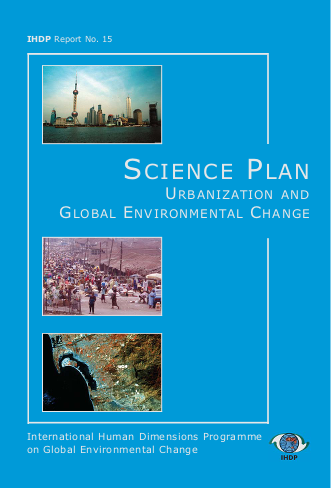
Urbanization - both as a social phenomenon and a physical transformation of landscapes - is one of the most powerful, irreversible, and visible anthro- pogenic forces on Earth. Many of the most important and significant changes associated with the impact of globalization are taking place in urban areas. More than half of the world's population live in urban areas and more than 90 percent of future population growth is likely to be concentrated in cities, and mainly in poor countries. Rapid growth of population and its concentra- tion in urban areas have significant implications for the long-term outlook for humanity. Burdened with many problems associated with growth, urban areas are increasingly subject to dramatic crises. This is especially true in poor countries where economic and financial crises, together with fast and unbalanced growth of urban areas, have created fragmented spaces with high spatial segregation that aggravates the social exclusion characteristic of those societies. The aforementioned problems play an important role in the interactions between urban areas and global environmental change. These interactions create a diversity of impacts that can be grouped in two broad categories: those originating in urban areas that have a negative effect on global environmental change, and global environmental changes that have negative effects on urban areas. Despite their growing importance, urban areas have been understudied in the analysis of global environmental change, with a majority of research placing emphasis on the impacts of urban areas on global environmental change. Research efforts focus particularly on the contributions of emissions of greenhouse gases and the heat island effect to global climate change. Much less attention has been devoted to the study of the impacts of global environmental change on urban areas and the people who live in them. Particularly critical are the conditions in poor countries. This core project seeks to fill this gap. Its goal is to develop a better under- standing of the interactions and feedbacks between global environmental change and urbanization at the local, regional, and global scales. Its strat- egy is to create a multidisciplinary and interdisciplinary perspective of these issues through innovative conceptual and methodological approaches. Its science plan puts emphasis on global environmental change both as driver and outcome of human (economic, political, cultural, and social) and phys- ical (urban structure, expansion, and land use) processes in urban areas. In this way, urbanization is viewed as both endogenous and exogenous to global environmental change, and the research strategy aims to study them as a tightly coupled system. The science plan of the core project has four thematic foci that cover the array of interaction between the urban and the global environment components of the Earth system. The conceptual frame- work starts with processes within the urban system that contribute to glob- al environment change (Theme 1). A second focus (Theme 2) is on the pathways through which specific global environmental changes affect the urban system. Once these pathways and points of intersection are identi-fied, the framework addresses the resulting interactions and responses within the urban system (Theme 3). Finally, the framework centres on the consequences of the interactions within the urban system on global envi- ronmental change, or feedback processes (Theme 4). These four thematic foci create a comprehensive perspective of the dynamic, diverse, and com- plex interactions between urban systems and global environmental change processes. Fundamental to the process are different levels of interaction and interconnectivity in the conceptual framework that focuses on: Interaction among dimensions within urban areas and global environmental change (social, cultural, economic, political, and biophysical) cross-temporal and cross-spatial scale approaches parallel and comparative studies across regions and time interactions among different actors and networks involved in complex dynamics in urban areas research that provides effective communication of results to the public and policymakers The short, middle, and long-term strategies of the core project have been designed to accomplish the goals and objectives of the core project through its 10-year life cycle. They include actions for research, policy and educa- tional outreach, and fund-raising. Together, they involve fostering an envi- ronment of continued learning and incorporating feedbacks to strengthen the core project as it evolves over time. However, this scientific plan, like any other plan, requires periodic assessments. The core project plans to organize annual workshops to assess the development of its research agen- da, as well as large scientific conferences at the end of each five years to assess the development of the core project, enhance its visibility, and make re-adjustments for further development.
Resource collections
- UN Habitat - Urban Response Collection
- Urban Response - Urban Crisis Preparedness and Risk Reduction
- Urban Response Collection - Community Engagement and Social Cohesion
- Urban Response Collection - Economic Recovery
- Urban Response Collection - Environment and Climate Change
- Urban Response Collection - Housing, Land and Property
- Urban Response Collection - Urban Crisis Response, Recovery and Reconstruction
- Urban Response Collection - Urban Resilience
